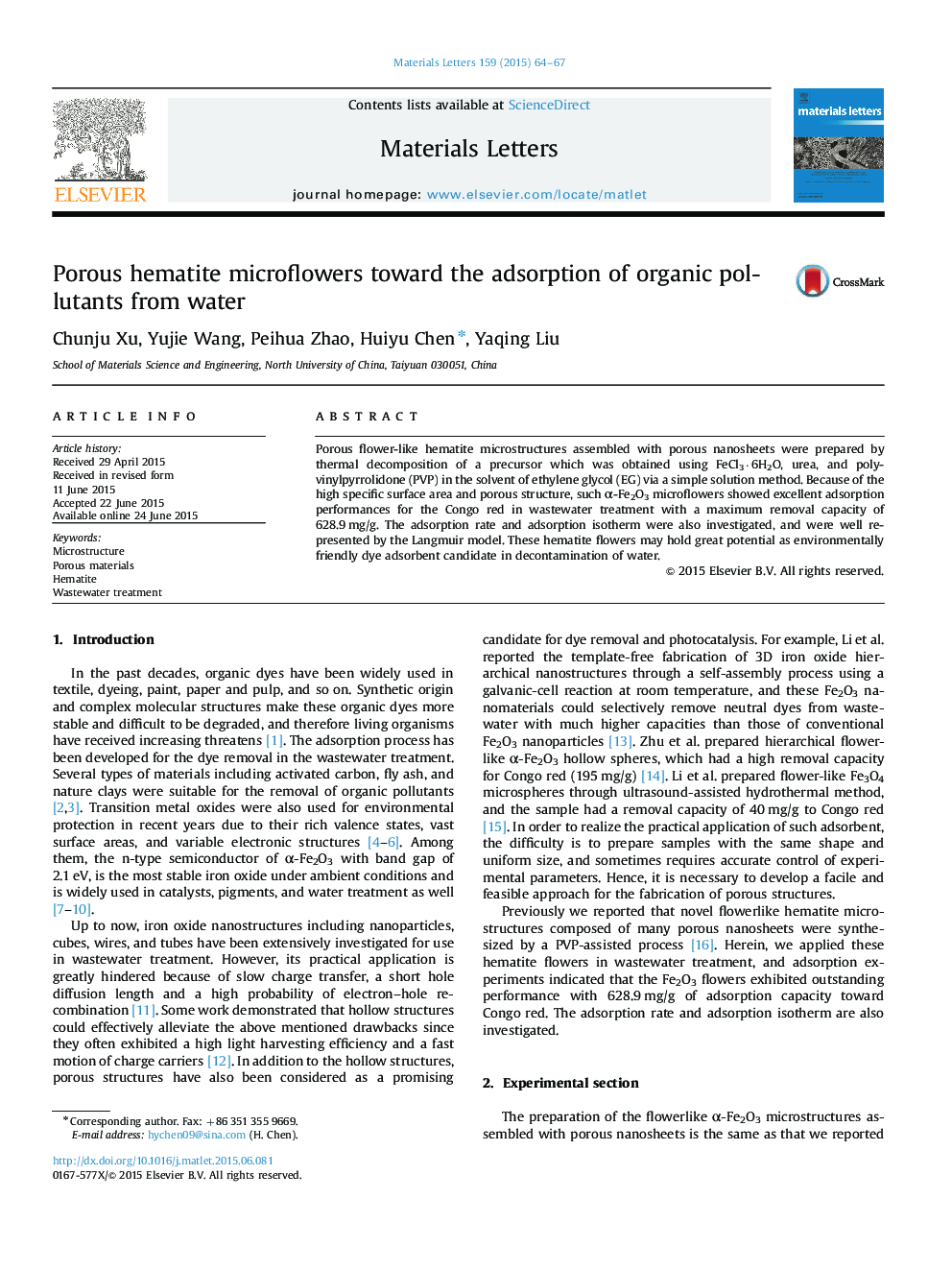| Article ID | Journal | Published Year | Pages | File Type |
|---|---|---|---|---|
| 1642246 | Materials Letters | 2015 | 4 Pages |
•α-Fe2O3 microflowers assembled by porous nanosheets were prepared.•PVP served as surfactant.•The sample possessed high specific surface area.•α-Fe2O3 microflowers exhibited excellent adsorption performances for the Congo red.
Porous flower-like hematite microstructures assembled with porous nanosheets were prepared by thermal decomposition of a precursor which was obtained using FeCl3·6H2O, urea, and polyvinylpyrrolidone (PVP) in the solvent of ethylene glycol (EG) via a simple solution method. Because of the high specific surface area and porous structure, such α-Fe2O3 microflowers showed excellent adsorption performances for the Congo red in wastewater treatment with a maximum removal capacity of 628.9 mg/g. The adsorption rate and adsorption isotherm were also investigated, and were well represented by the Langmuir model. These hematite flowers may hold great potential as environmentally friendly dye adsorbent candidate in decontamination of water.
Graphical abstractPorous flower-like hematite microstructures assembled with porous nanosheets were prepared by thermal decomposition of a precursor which was obtained using FeCl3·6H2O, urea, and polyvinylpyrrolidone in the solvent of ethylene glycol via a simple solution method. Such α-Fe2O3 microflowers showed excellent adsorption performances for the Congo red in wastewater treatment with a maximum removal capacity of 628.9 mg/g.Figure optionsDownload full-size imageDownload as PowerPoint slide
